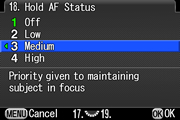Taking in the light and subject as seen through your eyes

HD PENTAX-D FA★70-200mmF2.8ED DC AW Aperture : F4.0; Shutter speed : 1/500 sec. ; Exposure compensation : -0.7EV ; Sensitivity : ISO 400 ; White balance : AWB ; Custom image : Vibrant


HD PENTAX-D FA★70-200mmF2.8ED DC AW Aperture : F4.0; Shutter speed : 1/500 sec. ; Exposure compensation : -0.7EV ; Sensitivity : ISO 400 ; White balance : AWB ; Custom image : Vibrant
To take full advantage of PENTAX’s experience and expertise in digital-imaging and data-processing technologies, the K-3 II has adopted an imaging engine used in PENTAX 645Z. This high-performance engine assures high-efficiency, high-speed processing of captured image data.

The low noise CMOS image sensor and powerful noise processing ability of PRIME III enable high-sensitivity, low noise shooting. You can also adjust the ISO AUTO range and noise reduction effects when necessary.
With PRIME III and the approx. 86,000 pixel RGB metering sensor enables advanced scene analysis. Images are captured based on information such as color and brightness distribution on the screen, the subject’s face, color, and movement. These factors also contribute to high-precision, stable AE and autofocus control.
[ Approx. 86,000 pixel RGB metering sensor ]
Traditional metering sensors only measured brightness, when this sensor also detects colors. The approx. 86,000 pixel resolving power is used to detect subject shape and movement with a high degree of accuracy. This makes for improved scene analysis ability where nearly all scenes are easily controlled.
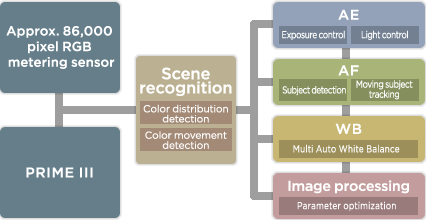
The RGB metering sensor with approx. 86,000-pixel also assures outstanding performance in high-sensitivity shooting, with its measurable minimum luminance level expanded to as low as -3 EV (at ISO 100, with a 50mm F1.4 lens). In combination with the high-performance AF system capable of accurate focusing at -3 EV luminance level, this sensor performs brilliantly for low-light scenes where subjects cannot be visually recognized by the naked eyes.
The camera compensates for distortion due to lens characteristics, image-field edge light drops, chromatic aberration of magnification, and reduced resolution due to aperture stop down (diffraction compensation). Color fringe correction is also carried out when processing RAW images.
The SAFOX 11 AF system is adopted. It includes a high-sensitivity AF sensor with superb responsiveness. By using a diffractive lens in the optical system, chromatic aberration is corrected in the AF unit, enabling high-precision detection. This model is also equipped with a light source detection sensor, which compensates for slight focus deviations that can easily occur under special artificial light sources.


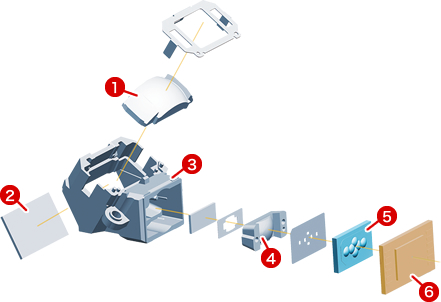
With 27 AF sensor points, giving you complete freedom over the composition. 25 of those are cross-type sensor points that are excellent at tracking subjects.
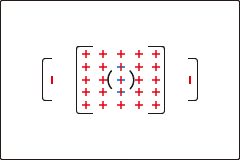
[F2.8 luminous flux compatible AF]
In addition to the center point, a high-precision AF point on the top and bottom are F2.8 luminous flux compatible. Useful for better accuracy when focusing is difficult using a large-diameter lens with a shallow depth of field.
[-3EV low-luminance AF]
By using a high-sensitivity AF sensor, the low-luminance limitation is expanded to -3EV (25 center sensors). This helps reduce situations where AF becomes slow in dark scenes, and when AF is affected by highly bright sections in backlit scenes. Also useful for accurately capturing low-contrast subjects.
In addition to limiting the number of AF points used, you can also set the position of AF points. [Auto (27 AF Points)] uses all sensor points, [Select] uses a single point only, [Spot] narrows down the range, and [Zone Select] and [Expanded Area AF] are useful for moving subjects.
[Zone Select]
This option limits AF to 9 sensor points (■ can be moved up, down, left, or right). The PENTAX Real-time Scene Analysis System automatically detects the subject from that zone for focusing and tracking.

[Expanded Area AF]
You can select any single point out of the available 27. If the focused subject on that single point moves, the surrounding AF points are used to focus. The zone can be expanded to 8 points (S), 24 points (M), and 26 points (L). These can be set when using AF.C/AF.A.

The PENTAX Real-time Scene Analysis System has the ability to accurately detect subject movement from people’s movements or color and continue monitoring this movement. When linked with this system, the AF points move along with subject movement. Using the advantage of densely placed AF points, highly accurate focus is maintained even for fast-moving subjects and high-speed continuous shooting.
*Available for AF mode Continuous AF (AF.C) and Auto Select AF (AF.A).

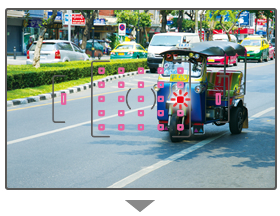

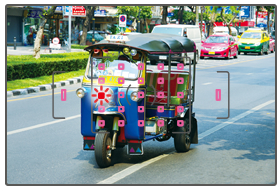
Performance demanded by AF changes according to subject movement and shooting conditions. The AF customization menu lets you fine tune AF properties. This feature flexibly conforms to a variety of photographer needs.
[AF Operation Properties]
You can set AF operation properties according to the AF mode and drive mode. In addition to Focus-priority and Release-priority, FPS (frames per second)-priority is also available for continuous shooting.
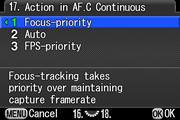
[Hold AF Status Setting]
Hold AF Status lets you maintain focus even if the subject moves after focusing or an obstruction causes you to lose track of the subject. You can extend the hold time in three steps.
